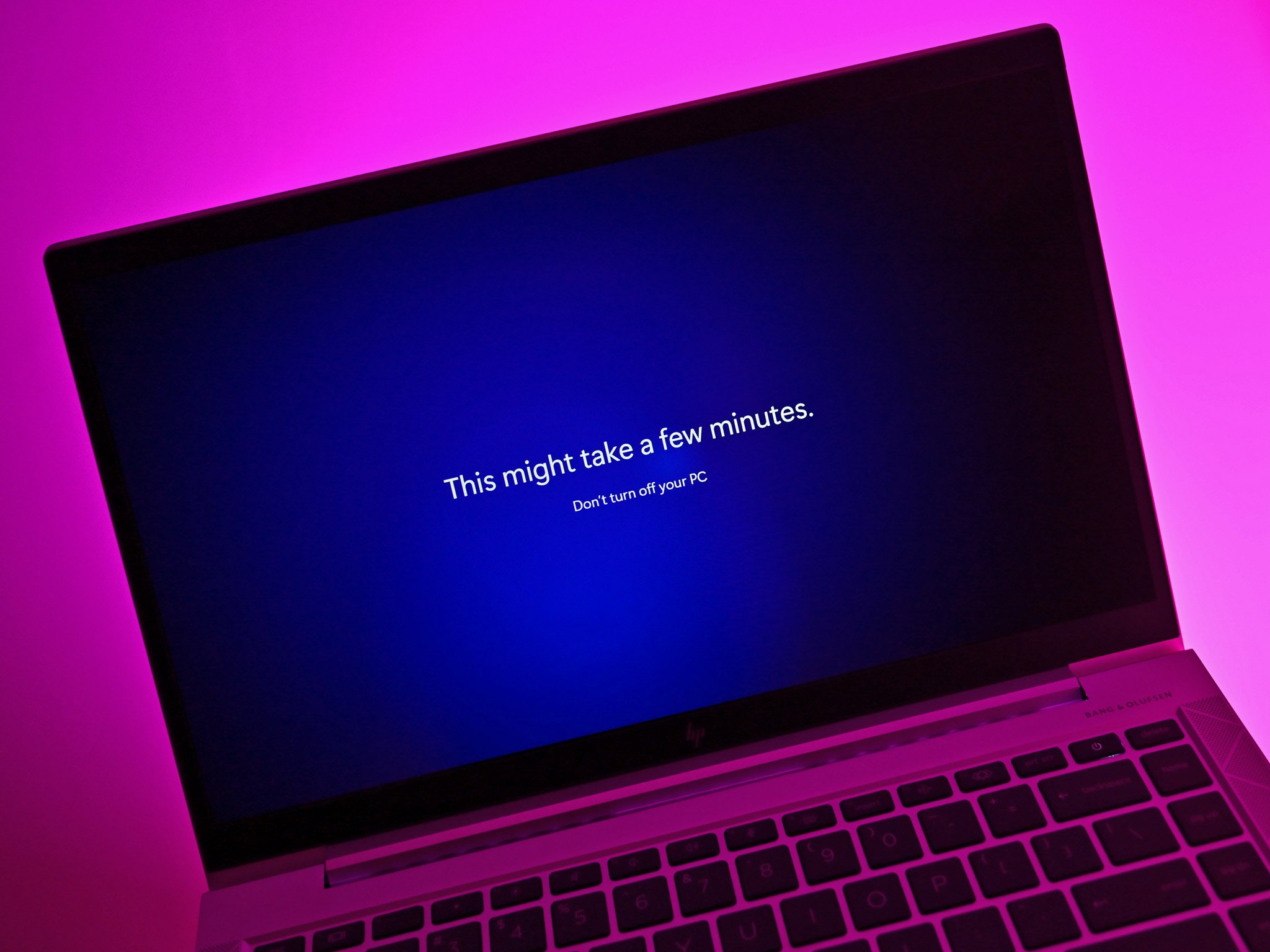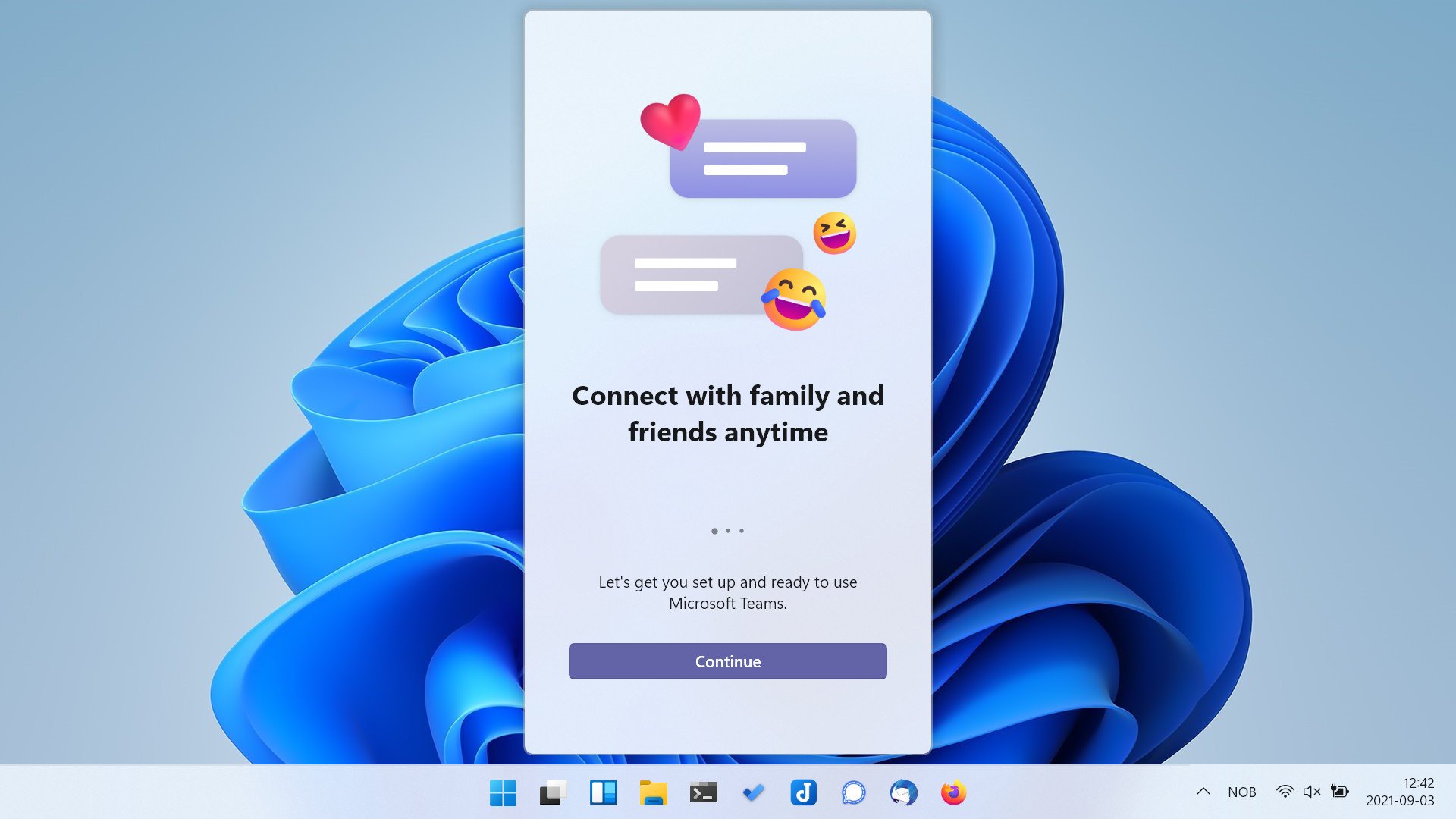Report suggests that an 'ad' for Microsoft Teams may have broken the Windows 11 desktop and taskbar
A new analysis suggests that it wasn't an OS update that busted people's Windows 11 desktops but a "serialized JSON blob."

What you need to know
- Some Insiders last night testing Windows 11 lost the desktop, Start menu, and taskbar after a reboot.
- Initial speculation tied the bug to yesterday's Beta and Dev channel releases.
- A new analysis suggests that a cloud-based Microsoft Teams pop-up may be responsible.
- The analysis calls into question how one failed cloud service can, reportedly, "bring the Windows shell to its knees."
Last night was a doozy for those on the Windows Insider program (Beta or Dev Channels) testing Windows 11. Many people restarted their PCs only to find the Windows 11 desktop, including the Start menu and taskbar completely missing. Users could access the Task Manager and command prompt to help navigate around, but that was it.
A few workarounds appeared, including an official one from Microsoft, that all interfered with the device's ability to properly communicate with Microsoft's servers, which raises the question: What exactly was it that caused the problem?
Microsoft didn't go into detail, just remarking it was "a server-side deployment that went out to Insiders."
However, a new report suggests it was even dumber: A pop-up notification for Microsoft Teams notifying you of the service and how to sign into it.
Daniel Aleksandersen, who writes on Ctrl blog, explains:
I took a closer look at what got downloaded and caused the Windows desktop shell to become unresponsive … The problem wasn't caused by an update delivered through Windows Update. (That would have been more understandable.) Instead, it was caused by a small file downloaded by a Windows component called IrisService. Iris is a part of Windows Spotlight (the Bing wallpaper of the day; and tips, promotions, and suggestions on the Lock screen).Based on the Microsoft-provided workaround, I narrowed the problem down to a registry key that contained a serialized JSON blob. The blob contained an advertisement for Microsoft Teams. The messaging and imagery in the promotion were identical to the panel you get when you press the Windows key + C on a Windows account not already set up with Teams. It's unclear if it's this exact promotion, however.
Some of these points line up with my own experience. I had to restart the PC for new Razer drivers being installed on my main desktop, not yesterday's Beta Channel update, as those drivers superseded its installation. Nonetheless, my PC suffered the same fate despite not going through the OS update. It may also explain why not all PCs were experiencing it (my three laptops were just fine).
But Aleksandersen goes on to raise a good question:
All the latest news, reviews, and guides for Windows and Xbox diehards.
There's an enormous elephant in the room, though: how Microsoft could have let this happen? Yes, this is a beta build for early adopters. Yes, rough edges and productivity losses are expected.However, that doesn't answer why the Windows shell was so poorly architect in the first place. How come that it would stop responding just because of one failed cloud service? It's not a crucial cloud service either, and the computer became useless because of a single JSON blob with an advertisement.
Assuming the analysis is accurate, Aleksandersen remarks that "…unimportant cloud-dependent systems must be isolated from the core operating system so that they can't bring the Windows shell to its knees."
I must caution that this is but one analysis of last night's problem. Still, until Microsoft comes out with a detailed explanation — and clarifies how this won't happen again — critics of Microsoft's cloud-based approach may continue to make a good point about the system's apparent weakness.
And whatever the cause, yesterday's problem was one of the most serious to hit the Windows Insider program just a month before the release of Windows 11.

Daniel Rubino is the Editor-in-chief of Windows Central. He is also the head reviewer, podcast co-host, and analyst. He has been covering Microsoft since 2007 when this site was called WMExperts (and later Windows Phone Central). His interests include Windows, laptops, next-gen computing, and wearable tech. He has reviewed laptops for over 10 years and is particularly fond of 2-in-1 convertibles, Arm64 processors, new form factors, and thin-and-light PCs. Before all this tech stuff, he worked on a Ph.D. in linguistics, performed polysomnographs in NYC, and was a motion-picture operator for 17 years.

